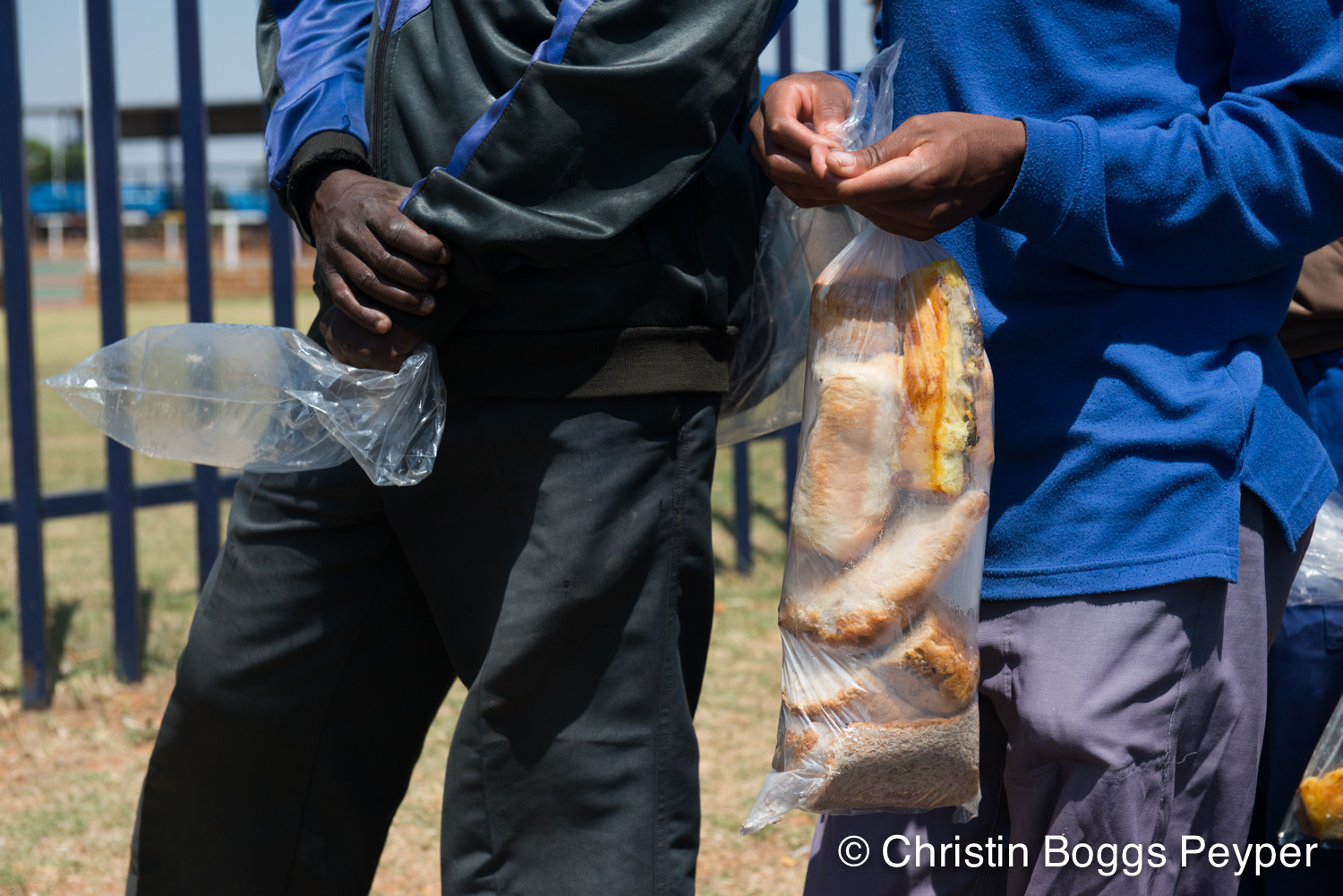A Model for Food Efficiency
Several weeks ago, I had the opportunity to witness a most beautiful gesture of creativity, resourcefulness and generosity that addressed on a micro-level two major international problems: food waste and limited food access.
In early October this year, I signed up for the South African chapter of WWOOF [World Wide Opportunities on Organic Farms] in order to locate organic farming operations in South Africa. Through WWOOF SA, I learned about One Green Corner, at X-Factor Crafts, located in Johannesburg. This space, run by a woman of many talents named Hanneke, is currently used for craft classes, care for rescued dogs and ex-battery chickens, growth of edible plants, hosting for WWOOF volunteers and Couch Surfing, as well as a site of collection for food that would otherwise go to waste. My camera and I were warmly welcomed to stop by for a visit.
One Green Corner is a house and yard in the suburbs of Johannesburg that has been converted into a space for maximum edible plant growth using innovation and repurposed objects. The swimming pool has been converted into a greenhouse where seedlings grow in cans and soda bottles, while larger plants above ground thrive in used tires. Avocado seeds are placed in water to encourage roots and stems to sprout for the beginnings of avocado trees. There was a man from Malawi named Omar who spent the morning watering the plants.
During my visit to One Green Corner, Hanneke invited me to join her any future Friday morning for dumpster diving and a visit to a soup kitchen. I was intrigued and took her up on her offer a week later. I wasn't able to take pictures of the process, but I'll attempt to explain what I learned through the experience.
About a third of all food produced for human consumption is wasted around the globe, and in an attempt to rescue some of this food, foragers sift through refuse containers behind grocery stores and take discarded edible items. Stores throw out foods that are nearing their expiration dates and in order to discourage food foraging for fear of potential lawsuits from food poisoning, inedible products like bleach are often mixed in with the edible items in garbage bins. As consumers who shop for food, it is important to understand that we are paying for food overabundance and food waste because stores know that they are not going to sell all the food they purchase from suppliers, and thus must increase costs to factor in the loss.
It is perplexing to think that so much food is tossed away even in a place like South Africa where limited food access is increasing. According to North West University Vaal Triangle Campus Professor Wynand Grobler's research titled "Urban Food Insecurity: A Case for Conditional Cash Grants?" undernourishment in Africa reached 232.4 million individuals last year, a rise from 181.7 million in 1990. In 2013, 26 percent of South African individuals were recorded as having limited access to food, a statistic that is on the rise. And yet, a third of the food from South African supermarkets also ends up in landfills, despite close proximity to impoverished communities.
Awareness is growing at an international level in regard to the absurd amount of food waste, and France is leading the way in establishing a policy in which grocery stores are required to give unsold edible food to charity. The American National Public Radio Show Planet Money ran an interesting story last week called The Pickle Problem that provides a glimpse into the way in which food banks are run in the United States.
On the day that I tagged along for the dumpster dive, the group drove up behind a supermarket and showed a letter of permission from the store manager to the security guard. The contents of the dumpsters weren't so impressive when we arrived. Even still, the divers put on gloves and opened up garbage bags looking for edible food, though at that moment there were maybe only a few bananas here and there. Twenty minutes later, a shopping cart full of baked goods was wheeled out, along with three large containers of beautiful strawberries. Apparently this was a very scarce day in contrast to the multiple pickup truck loads they drive off with on most days. We went to a second grocery store that gives away day-old bread to charities, but someone else had already made off with the day's bounty. So it wasn't such a great day for foraging, but fortunately other food had been collected earlier in the week and off we drove across town to what was called "the soup kitchen."
With the term "soup kitchen," I imagined an indoor kitchen, fully furnished with refrigerators, sinks and various appliances, maybe even air conditioning. But when we arrived, there was a long line of about 50 men, sitting in the hot sun, in front of two tables piled with bread. The men stay in a nearby township, many of whom have migrated to South Africa from neighboring countries in search of work. Several women from the community also come to the soup kitchen regularly, serving as volunteers and receiving food as well. The men are given plastic bags which are filled to the top with bread, fruit and cake. On this particular day at the soup kitchen, the men were also offered one or two styrofoam cups full of butternut soup, cooked from rescued vegetables at the home of a volunteer. For fear that any leftover food might be stolen, most food was consumed right there at the soup kitchen, rather than saved for later.
All this effort is run solely by independent volunteers, who spend their own time, car fuel and kitchen electricity on something they believe in, setting an incredible example for one way in which to bridge the gap between food waste and food insecurity. But ultimately, I would argue as the title of this website conveys, that there needs to be an entire paradigm shift in which consumers stop relying solely on supermarkets for sources of sustenance and instead actively engage with food production by growing some of their own food, while also supporting local farmers and food artisans.




























